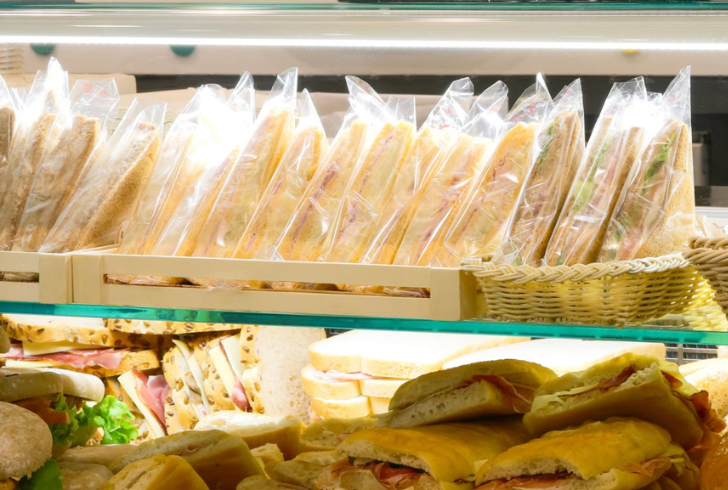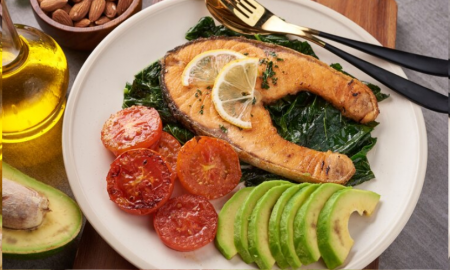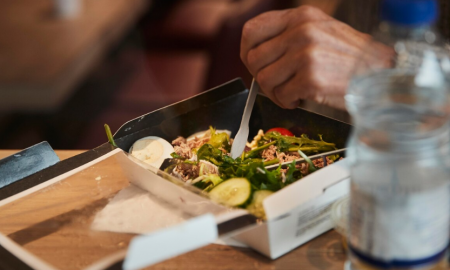
Foods and Drinks to Avoid at the Airport, According to Experts

Airports are a hub of activity, offering a wide range of food and drink options as travelers rush to board their flights. But while these options may seem convenient, not all airport foods are safe. Improper handling, storage, and temperature control can easily lead to foodborne illnesses.
Before grabbing that pre-packaged sandwich or quick salad, it’s worth considering the potential risks. Food safety experts weigh in on which foods and drinks to avoid in airports to ensure a smoother journey, free from stomach discomfort.
Common Airport Food Safety Concerns
The reality of airport dining is that food safety can be compromised in a hurry. With thousands of people passing through terminals daily, the chances of cross-contamination, improper food handling, or employees unknowingly spreading germs are higher. Martin Bucknavage, a food safety extension associate at Penn State University, notes that bacterial contamination can occur at any stage—from mishandling of ingredients to improper cooking, or even if employees handling food are ill.
Airports, with their high foot traffic and busy environments, often struggle with maintaining proper hygiene and temperature control. In a place where speed is critical and customers are often in a rush, shortcuts in food preparation may inadvertently increase the risk of foodborne illnesses.
Foods to Avoid at the Airport
1. Pre-Made Sandwiches

Freepik | Pre-made sandwiches pose potential health risks due to extended display times.
Grab-and-go sandwiches may look like a convenient option, but they can be risky. Many of these sandwiches sit in display cases for hours, sometimes longer than recommended. If the refrigeration unit isn’t maintaining a safe temperature, bacteria like Listeria and Salmonella can grow.
A key concern is that deli meats and leafy greens don’t go through a “kill step,” meaning they aren’t cooked to destroy bacteria. To minimize risk, opt for a freshly made hot sandwich instead.
2. Pre-Packaged Salads
Similar to sandwiches, pre-packaged salads are a gamble. Since raw vegetables aren’t cooked, any contamination that occurs during handling stays on the food.
Food safety expert Bucknavage advises paying attention to food service cleanliness. “If employees are handling money and food without washing their hands, that’s a red flag,” he says. Additionally, salad bars present a high risk of cross-contamination, as the same utensils often touch multiple ingredients.
A safer alternative? Warm grain bowls or cooked vegetables, which eliminate the risk of bacteria lingering on raw greens.
3. Sushi and Raw Seafood
Sushi at an airport might sound like a treat, but it can be one of the riskiest foods to eat before a flight. Keeping raw fish at a consistently low temperature is critical to preventing bacterial growth. If not stored properly, histamines can form, leading to food poisoning.
“Fish requires stricter temperature control than other proteins,” Wollenzien notes. “If airport refrigeration units struggle with maintaining safe levels, it’s best to avoid raw seafood altogether.”
For a safer option, choose cooked seafood or sushi made fresh in front of you rather than pre-packaged varieties sitting in display cases.
4. Fountain Drinks and Iced Tea Machines
While soda from a fountain may taste crisp and refreshing, it could also carry unseen bacteria. Beverage dispensers in high-traffic areas can accumulate mold and bacteria if not cleaned regularly.
“Soda and iced tea nozzles are difficult to sanitize properly, and with so many people using them, they become a breeding ground for bacteria,” says Wollenzien.
If you want a drink, bottled beverages are the safest choice, as they remain sealed and untouched until opened.
Tips for Safer Airport Dining
Even if you’re on the go and in need of something quick, there are ways to minimize the risks associated with airport food.
1. Hand Hygiene is Key

Freepik | Reduce germ risk at airports by consistently practicing proper handwashing techniques.
According to Wollenzien, the most important thing you can do is wash your hands. Airports are a breeding ground for germs, and washing your hands is one of the best ways to reduce the spread of bacteria.
2. Inspect Pre-Packaged Meals
If you’re grabbing a pre-made meal, carefully inspect it before purchasing. Check for any signs of spoilage, such as sliminess or dried-out sections. The longer a meal sits out, the greater the chance that bacteria will develop.
3. Eat Immediately
If you purchase a salad or other grab-and-go item, consume it sooner rather than later. Don’t let these items sit around for long periods, especially if you have a long flight ahead.
4. Go for Hot Food
Opt for warm meals, as they are less likely to have been sitting at improper temperatures for extended periods. Hot meals like soups, stews, or freshly cooked dishes are often safer than cold, pre-packaged options.
Choose Wisely for a Comfortable Trip
Dining at the airport doesn’t have to mean putting your health at risk. By avoiding high-risk foods like pre-made sandwiches, raw seafood, and self-serve drinks, you can reduce your chances of getting sick during your travels.
Instead, prioritize hot meals, inspect pre-packaged items carefully, and always practice good hygiene. Remember, the small effort you make in choosing safer options can go a long way in ensuring you arrive at your destination feeling great.
By making informed choices and being mindful of food safety, your airport experience can be more pleasant, leaving you to enjoy your flight without worrying about a foodborne illness.
More in Food
-
`
How Much Does It Cost to Travel in Europe?
Dreaming of strolling along the Seine in Paris, exploring ancient ruins in Rome, or sipping sangria on a Spanish beach? Europe’s...
August 13, 2024 -
`
Mahershala Ali and Amatus-Sami Karim’s Decade-Long Marriage
Who is Mahershala Ali married to? This question often arises when discussing the acclaimed actor. Mahershala Ali, the talented and versatile...
August 5, 2024 -
`
Is It Normal to Be Sore After a Massage? 9 Ways to Relieve Soreness
Is it normal to be sore after a massage? Many people schedule a massage to drift into a state of relaxation...
August 3, 2024 -
`
Delicious Pescatarian Breakfast Ideas
Exploring new breakfast ideas can be a delightful way to start your day, especially when they align with a pescatarian diet....
July 24, 2024 -
`
Is Phuket Worth Visiting in 2024?
Phuket, Thailand’s gem of an island, has long attracted travelers with its pristine beaches, lively nightlife, and cultural treasures. The question...
July 19, 2024 -
`
What is the Best Way to Melt Chocolate for Any Recipe?
Chocolate is a beloved ingredient in many desserts, from ganache and cake batters to decadent drizzles over ice cream. Knowing what...
July 12, 2024 -
`
How to Plan a Backpacking Trip Like a Pro in 16 Steps
Planning a backpacking trip can be as thrilling as it is daunting, especially if you’re keen to make every moment count....
July 5, 2024 -
`
How to Build Fast-Twitch Muscles in 5 Simple Steps
Have you ever wondered how to build fast-twitch muscles? These powerful muscle fibers are key to explosive strength and speed. Whether...
June 20, 2024 -
`
How to Create the Perfect Goulash Recipe Every Time
As autumn leaves paint the landscape in warm hues, nothing complements the chill in the air quite like a bowl of...
June 15, 2024















You must be logged in to post a comment Login